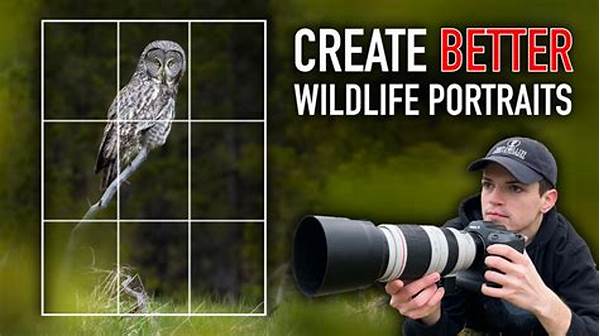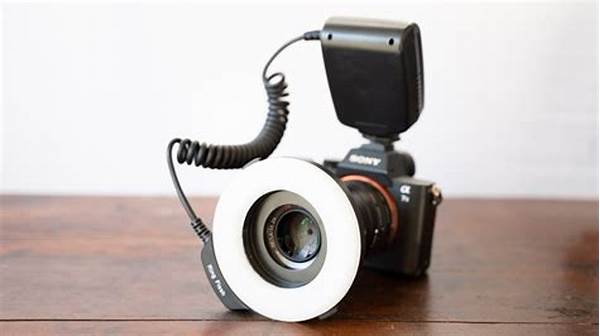Hey there, fellow shutterbugs! Are you ready to up your wildlife photography game? Whether you’re snapping shots of majestic elephants in the savannah or capturing the playful antics of squirrels in your backyard, mastering the art of composition is key. Wildlife photography isn’t just about being at the right place at the right time; it’s about framing the moment just right to tell a story. Dive in with me on this wild journey of composition tips for wildlife images that will help you translate the beauty of the natural world through your lens.
Read Now : Tips For Photographing Moving Animals
Rule of Thirds and Beyond
When it comes to composition tips for wildlife images, the rule of thirds is often the first stop. Imagine dividing your frame into a grid with two vertical and two horizontal lines. Placing your subject at the intersections can create a sense of balance and interest. But hey, rules are made to be creatively bent! Don’t be afraid to experiment by placing your subject off-center to evoke different emotions or highlight movement. Leading lines can also guide your viewers’ eyes through the image, offering a sense of depth. Remember, wildlife is unpredictable, and so should be your approach. Play around with different compositions to see what works best for the story you want to tell with each image. It’s all about finding that unique perspective that makes your image stand out.
Filling the Frame
One of the most crucial composition tips for wildlife images is to fill the frame with your subject. This means getting closer or zooming in to avoid any distractions in the background. It emphasizes detail, whether it’s the texture of an elephant’s skin or a bird’s vibrant feathers.
Using Negative Space
Including negative space in your composition can be as impactful as filling the frame. This composition tip for wildlife images emphasizes the subject by providing room to breathe, making the viewer focus on the main attraction without visual clutter. It’s a minimalist approach with maximum effect.
Perspective Matters
Changing your perspective can dramatically alter the impact of your wildlife images. Try shooting from a low angle to give dominance to your subject or from above to offer a bird’s-eye view. This composition tip for wildlife images can add a fresh, unexpected take on familiar animals or scenes.
Patience and Timing
When discussing composition tips for wildlife images, patience and timing are as important as technical knowledge. Often, the perfect frame reveals itself after hours of waiting. Be prepared to capture the spontaneous moments that tell a deeper story of animal behavior and interaction.
Natural Framing Opportunities
Another exciting aspect to explore in composition tips for wildlife images is using natural elements around you as frames. Tree branches, tall grasses, or even shadows can naturally frame the wildlife, adding depth and context to your images. This technique subtly draws attention to your subject while integrating it harmoniously with its environment. Keep your eyes peeled for those organic frames that enhance the story without stealing the spotlight.
Read Now : Best Free Software For Photo Watermarking
Light and Shadow Play
Ever noticed how everything looks more magical during sunrise and sunset? That’s the golden hour magic, folks! When diving into composition tips for wildlife images, playing with light and shadows can make a massive difference. The way light bounces off a lion’s mane or casts long shadows of giraffes across the African plains can add a dramatic, almost ethereal touch to your shots. Experiment with backlighting to create silhouettes or side lighting to highlight textures. It’s all about using light to accentuate your story and create mood. And let’s not forget those dramatic cloudy skies- they can add an unexpected twist to your wildlife portraits. The key is to remain adaptable and use the available light to your advantage.
Embracing the Chaos
Aight, let’s get real for a sec. Wildlife photography ain’t always rainbows and butterflies. Sometimes it’s a whole lot of waiting and, let’s face it, chaos. But here’s the thing — within that chaos lies some seriously killer shots. Embracing the unpredictable is part of the gig. When it comes to composition tips for wildlife images, sometimes it’s the unplanned moments that steal the show. That perfectly timed leap of a deer or the surprise interaction between animals can make your photo unforgettable. Capturing that raw, unpredictable aspect of nature adds authenticity and drama. So, keep that finger on the shutter and embrace whatever comes your way. Trust me, those spontaneous moments are often the gems of wildlife photography.
Wrapping It Up
In the world of wildlife photography, your composition tells a story. That’s why diving into composition tips for wildlife images is essential for capturing those breathtaking moments. Remember that each animal, each setting, and each light offers a new story waiting to be told through your lens. Whether you adhere to classic rules like the rule of thirds or bravely venture into uncharted creative territories, finding your unique voice in photography is the most rewarding part of the journey. So grab your camera, head into the wild, and get ready to capture the wonders of wildlife from your perspective. Happy shooting, my friends!



